Yamaha RX-A6A Reviewed at $2,199.00
Product Name: Yamaha RX-A6A
Product Description: 9.2 CH 8K AV Receiver
-
Design - 9.4/10
9.4/10
-
Audio Quality - 9.4/10
9.4/10
-
Inputs / Ports - 9.5/10
9.5/10
-
OS, Apps and Features - 9/10
9/10
-
Price / Quality - 9.2/10
9.2/10
Summary
Reviewed at $2,199.00
Pros
- Amazing audio quality
- Excellent construction and audio components
- Plenty of DSP options
- Bug free HDMI 2.1 ports
Cons
- Many HDMI features will be unlocked in the future
- The remote could be simpler
- No front HDMI port
Cheapest Places to Buy :
*We are a reader-supported website. When you buy through links on our site, we may earn a small affiliate commission at no extra cost to you. Home Media Entertainment does not accept money for reviews.*
Today we will be finishing our look at Yamaha’s refreshed AV receivers lineup with the second in line of the Aventage series which in reality doesn’t have so many differences from their top flagship, the RX-A8A. Although it seems this refreshed lineup has less models compared to previous years Yamaha has still created enough diversity among their models in order to offer something for everyone. And so in our Yamaha RX-A6A review today we will be looking at this 9.2 channels receiver and what differences there are, if any, between this one and the other Aventage releases.

Until recently 9.2 channels were the maximum channels Yamaha was offering in the units and it was a major complaint among their loyal fans. But with the arrival of the RX-A8A all this changed but looking at the specs of the RX-A6A you will find that the differences are actually very small which can actually save you a few bucks depending what setup you are planning to create. In essence the differences between the RX-A6A and the RX-A8A is the number of channels built-in, the DACs configuration and some minor hardware differences and that’s all.
As for the RX-A6A specifically, it comes with 9.2 channels of built-in amplification with 150 watts of power (8 ohms, 0.06% THD, 2 channel driven) while it can expand up to 11.2 channels with an external amp. All other features are like for like with its big brother meaning we get Dolby Atmos and DTS:X while Auro-3D is available with a firmware update. The receiver uses Yamaha’s Cinema DSP HD3 and Surround:AI while it comes packed with specific Aventage enhancements in its hardware for better audio output. As for the rest of the features we get the YPAO Sound Optimization, high resolution audio, WiFi and Bluetooth streaming, MusicCast, Airplay 2, multiple zone capabilities and most importantly HDMI 2.1 support for which we will talk in more detail in the connectivity section.
If 11.2 channels is too much for you then the RX-A6A is ideal as you get all the goodies from Yamaha’s flagship with less built-in amps which brings the cost down and makes the AV receiver more compact and more affordable. This way you will not feel like you are missing anything major which in our opinion was an excellent design decision by Yamaha. But as always everything depends on how the AV receiver will perform so without further delay let’s start our analysis…
Design
In a way this review feels a lot like deja vu as the similarities with the RX-A8A are so many that we will be certainly repeating a lot of the same things we observed during that testing. Wherever there are differences we will be mentioning them and make changes to any parts we feel necessary.
The RX-A6A measures 17-1/8” x 10-5/8” x 17-3/8” (435 x 271 x 442 mm) but as always you can save a bit of height by turning the antennas in a horizontal position which lowers its height requirements to just 7 1/2” (192 mm), the same as the rest of the new Yamaha units. The receiver weights 41.2 lbs (18.7 kg) which is about what you should expect from an AV receiver of this category.
Now as far as the design goes the RX-A6A uses the same refreshed chassis that the rest of the Aventage series have. The only difference we see between this one and the RX-A8A is the depth as the less amplifiers being utilized here need less space giving the RX-A6A a more compact footprint. Everything else is like for like.
Featuring an almost entirely front gloss side, the volume knob has been repositioned in the middle compared to previous years and the display screen got updated as we get an LCD variant that is placed on the right side of the volume knob. On the far right a second smaller knob is used for navigating the display screen and selecting input sources.
Above the smaller knob we find three small indicators for Zone, Pure Direct and Surround:AI (with the last one missing only from the RX-A2A) while on its right side, under the LCD display, there are some touch controls with four SCENE buttons, Return and Menu.
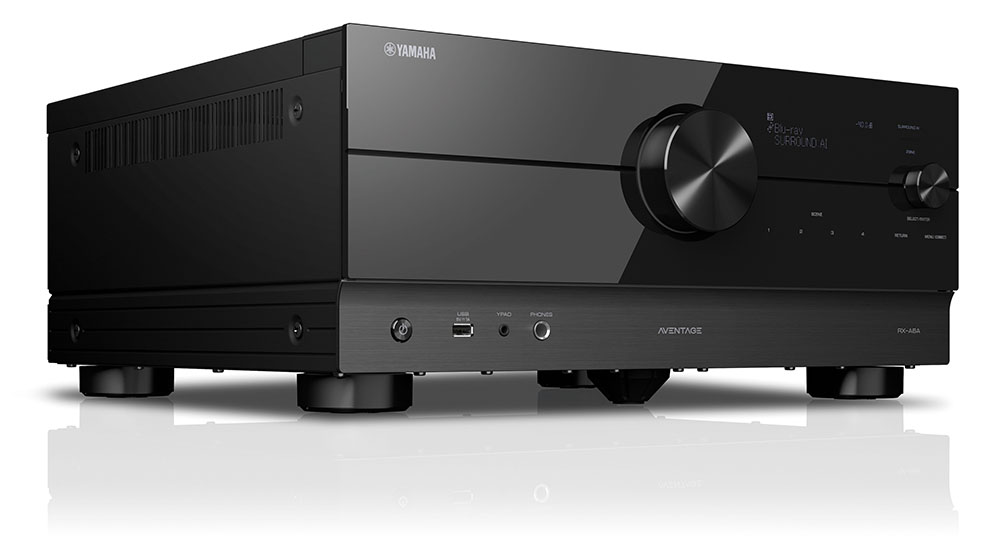
On the lower part of the front face there is a small part that features a matte surface and this is where we find a circular button on the far left for power along with a single USB port for connecting external storage, the YPAO microphone input port and the usual Headphones jack. All these redesigned AV receivers seem to have lost the front analogue stereo input. And while this may not be missed much what we do miss is a front HDMI input which we consider such a huge practical feature to have.
Everything is the same here so no real surprises to be found. Where we find some differences is in the inside as the RX-A6A seems to come with some different audio components compared to the flagship release. First of all as with all Aventage units we find a high slew rate amplifier. The slew rate measures how quickly an amplifier can respond to a rapid change of input level, which contributes to delivering a precise signal transmission and is especially effective with high resolution audio signals.
What seems to be different is the separation between the transformer and power stages. Also the RX-A6A doesn’t have the extra-large custom block capacitors or the same level of structural damping as Yamaha’s flagship. Lastly the RX-A6A seems to be using a different DACs combination as here we get a single ESS SABRE ES9026PRO Ultra DAC for the main channels along with a single ES9007S DAC for the rest of the channels.
The DACs come with ESS’s patented 32-bit Hyper Stream, Total Harmonic Distortion (THD) compensation function that works to minimize noise levels. In combination with the Yamaha original D.O.P.G. (DAC On Pure Ground) concept, it eliminates the potential difference between audio circuit stages to reduce ground noise and dramatically enhances silence and resolution over the entire audio range. The receiver also comes equipped with a Qualcomm QCS407 with 64-bit high precision DSP to support Dolby Atmos and DTS:X immersive home audio.
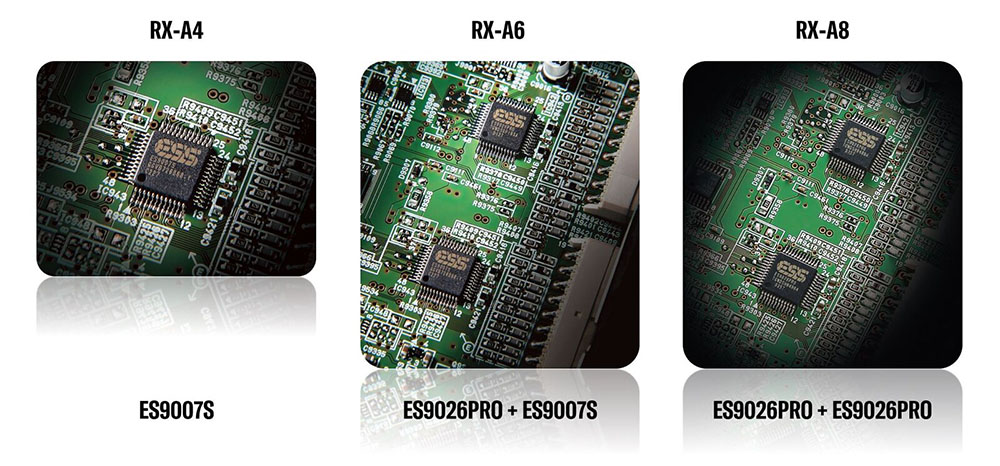
One element that seems to be very characteristic in the entire Aventage receivers is the fifth foot that is placed directly in the middle underneath the receiver. The Anti-Resonance Technology (A.R.T.) Wedge, as Yamaha calls it, dampens vibrations from the power transformer, power transistors and heat sinks, as well as vibrations that might be caused by the sound from the speakers providing dynamic sound and focused, accurate reproduction. In many of the new models, including this one, it seems that this foot has been brought towards the front, probably for best results from Yamaha’s testing.
As for the supplied remote it seems that the Aventage series is using a different remote than the one we saw in their RX-V series. The one that came with this unit looks a little bit better but nothing that speaks premium quality. It seems that since the RX-A4A, RX-A6A and RX-A8A all come with the same features there was no need to have different remotes and so they are all using the same one.
Only the one we found in the RX-A2A was slightly different. As such the zone switch at the top has more positions to choose from as the receiver supports more zones and also there is an AI button added for the unit’s Surround:AI functionality.
Overall the layout has improved compared to what Yamaha has been offering in their lower tier units but still it’s cluttered with buttons that most of the time you will never use. Yamaha gives a lot of attention to its Scenes feature and thus has positioned these buttons in a prominent place.

As for the remote we will once again say what we thought about it in our other Aventage reviews. The remote is big and cluttered with a lot of buttons which shouldn’t be necessary in this day and age where smart TVs use remotes with as few buttons as possible. Hopefully AV receivers will go the way of TVs did and offer better user interfaces making the inclusion of such high number of buttons unnecessary.
The RX-A6A has the same quality as all other Aventage units. Yamaha know their art and the receiver does feel sturdy and of high quality as always.
Audio Quality
The RX-A6A comes with 9.2 channels of built-in amplification and in reality as far as what the AV receiver has to offer this is the only difference you will find compared to the RX-A8A. As usual we get support for both Dolby Atmos and DTS:X, and obviously all the older audio mixes like Dolby TrueHD, DTS-HD Master Audio, Dolby Digital Plus, Dolby Digital and DTS.
There is also Auro-3D support but for this you will have to update the unit to the latest firmware as many of the initial units did not support this out of the box. It seems that right now an update (ver 1.59) have been released which adds Auro-3D support. Unfortunately we didn’t have any Auro-3D content at hand in order to try this for ourselves. Hopefully in the future we will be able to.
Up-mixing technologies couldn’t be missing from this one so we do get the usual Dolby Surround and DTS Neural:X that are the standards for most receivers nowadays and can up-convert legacy tracks like stereo mixes into full surround audio.

The RX-A6A along with the RX-A4A and the RX-A8A are the only AV receivers that use Yamaha’s best DSP variant which is the Cinema DSP HD3.
If you don’t know what Cinema DSP HD3 is, it’s Yamaha’s proprietary sound field creation technology that utilizes multiple CINEMA DSP engines and permits lossless decoding of 192kHz signals, while providing 3D processing that gives the sound field an extra vertical dimension. With Cinema DSP the receiver is capable of recreating various audio spaces like concert halls or sport arenas which can bring a whole different level of immersion.
The unit comes with the maximum number of DSP programs that Yamaha has made available which is 24 which gives you plenty to try out. This stereoscopic sound field technology is a really interesting one and there are cases where it can boost the overall volume and immersion of sound but there are also a lot of cases where the end result can feel very artificial. Keep in mind that a lot of processing is at play here and we are not very fond of processed sound that alters the original mix very much. But it’s nice to have this system as you may find it more to your liking than us.
With the use of Cinema DSP HD3 the receiver is also capable of offering various virtual features. First of all there is Virtual Cinema DSP which can reproduce up to 7 channels of surround sound without the need to have any surround speakers connected. Next we get Virtual Cinema Front which lets you position your surround speakers at the front and still get surround activity at the back of the listening position. This can be very handy in case you are limited by space and you cannot place your surround speakers where they should really be.
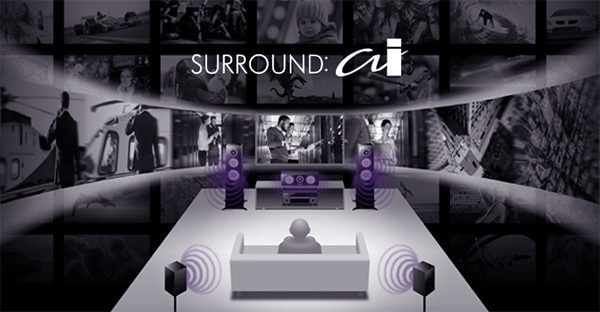
Another feature we get is Silent Cinema. With that you can enjoy surround and sound field effects by only using your headphones. There is also Virtual Presence Speaker (VPS) support as these can be created without any actual presence speakers available. With the Virtual Surround Back Speaker (VSBS) feature you can get activity when there are no actual surround back speakers available.
Lastly what was missing from previous yearly releases was Dolby Atmos Height Virtualization. If you don’t have the option to add in-ceiling or upward firing speakers in your system, Dolby Atmos Height Virtualization technology can simulate a similar Atmos experience without the use of any.
A feature that makes a return from the previous models and it was only included in the top tier releases is Surround:AI. Now this technology, that is built-in the DSP, optimizes the surround effects in real time by analyzing each scene and focusing on specific sound elements like ambient effects, music, dialogue and special effects.
This can be a nice feature for those that don’t want to mess around with the individual DSP programs and prefer a more automated system to handle everything but as with all these technologies that are available, the source content will very much determine the actual result. Specific content can benefit from it while that was not always the case with the end result feeling much more altered than what we would like. But it’s good to have it as a feature to try it out.
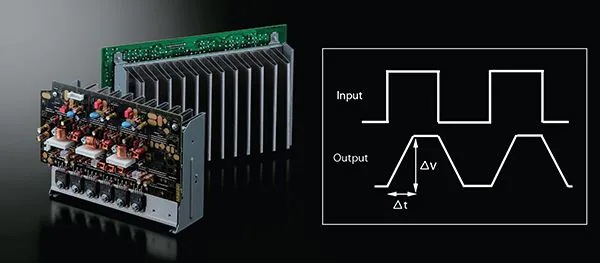
When it comes to its internal amplifiers the receiver can output 150 watts per channel (8 ohm, 20 Hz – 20 kHz, 0.06% 2ch drive) which surprisingly is the same as the RX-A8A showing how much these two AV receivers have in common. Obviously the more channels in use the lower this number goes. It’s a pity that manufacturers include only 2 channels power ratings as this can be a very misguiding number when it comes to full surround systems that utilize much more channels than just two.
For our movie testing we opted for a 5.1.4 channels setup with four height speakers and a single subwoofer that was placed at the front left corner of our testing room. The film we decided to try out was the 4K UHD version of Zack Snyder’s Justice League that comes with a fantastic Dolby Atmos mix.
There are so many scenes to choose from so we did a bit of fast forward through this 4 hour long marathon and the Yamaha was as good as it gets with material like this. Yamaha’s sonic presence at the front was a feast for the ears and will easily fill your room with sounds that has extraordinary sideways extension and depth.
Dialogue was nicely kept front and center and with a high level of clarity even during the most action filled moments. But not only the front was good as surrounds would work nicely with the front channels and deliver a top class immersion bubble. Panning effects had smooth and accurate transitions while all sound sources were highly detailed.
The film offers plenty of scenes for the Atmos channels to flex their muscles and the Yamaha provided an excellent extension to the overhead layer. And with four height speakers in our setup they were very accurate throughout the entire running time.
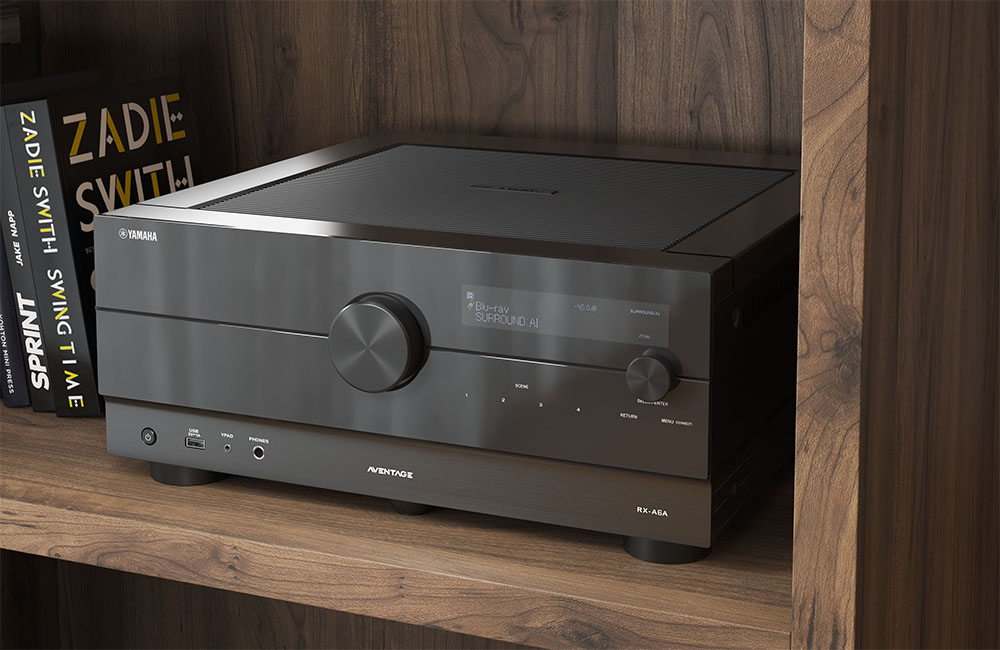
The unit was not only good at providing very detailed and accurate surround sound but could also go high in volume without loosing much of its balance. We couldn’t push it to the maximum, our ears were heavily against that, but as much as we did push it we didn’t notice any noticeable compression or stability issues across the entire frequency range. The mid-range was the sturdy foundation such a performance needed while the highs sounded energetic and the low end vigorous and powerful.
Overall the RX-A6A will be an excellent match if you plan on using it in a home theater system. It has the power, excellent surround performance and high detailed output that will impress anyone listening to it, either casual or experienced users.
As for music the receiver supports not only the usual lower quality audio formats like MP3, WMA and AAC which by the way all of them can go up to 320 kbps but can also playback High Resolution Audio in the likes of FLAC (384/24 bit), ALAC (96/24 bit) and WAV/AIFF (384/32 bit) files. DSD streaming is also available for up to 11.2 MHz. It seems that Yamaha has updated the specs in their latest releases as previous models could support FLAC and WAV files only up to 192kHz.
The receiver also features Yamaha’s Compressed Music Enhancer that is capable of enhancing lower quality audio like MP3 files to near High Resolution Audio quality levels. Compressed Music Enhancer can also work through Bluetooth which usually lowers the audio quality to meet the necessary transmission requirements. This is a feature we have seen in almost all their releases and although you shouldn’t expect a day and night difference in certain cases it can really help with lower quality content.
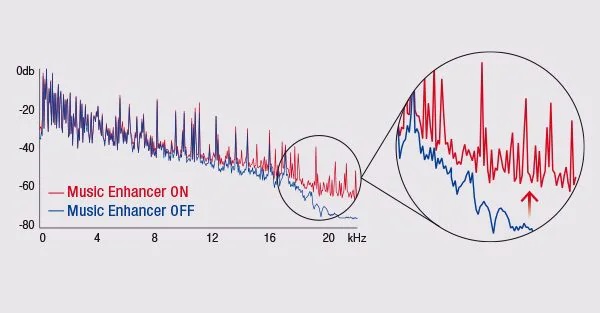
Next, as we usually do, came our music tests and as such we selected a few favorite tracks in FLAC format that we streamed through the front USB port for the best quality possible. We were always fond of the music quality Yamaha AV receivers could output so we were not expecting anything less from this one.
We already had listened to how the other Aventage units performed so more or less we knew what to expect from the RX-A6A. And to be honest we were not disappointed. The unit was as good as any top tier Yamaha AV receiver should perform here. The soundstage at the front was amazing. Music felt so much alive and with so much energy and details we just didn’t want to finish our testing.
The kind of musicality this receiver can output is noteworthy and for a device that tried to include everything in a single box, we cannot see how things can improve more than this in the future. Sound imaging was very nice with accurate positioning of all sound sources. Also panning stereo sounds were great no matter the source material.
Again the receiver felt very balanced across the entire dynamic range. Either you tend to listen to music to normal volume or you like your walls to shake and your neighbors to cry, the Yamaha will do its job without stumbling or loose cohesion. It kept its momentum and its posture at all times.
As we did with the other Yamaha units, we did try once again their various DSP programs and they were as good as in the other reviews we did before. Some of them feel more natural than others but ultimately if you are going to use them or go for a more pure sound output is really up to you and how you like your music.

Lastly in order to get a taste of the RX-A6A’s flexibility we tested it through various genres including classical music, pop, rock, some heavy metal and ended our session with a few bits of jazz. Our verdict was that you cannot find anything really bad to say here really. The unit was so easy going and can follow the rhythms and notes with such a natural and pleasant way that each song becomes an experience by itself.
Something that we keep saying in may of our reviews is that when it comes to AV receivers it may not be the preferred way of many audio purists. But having everything in one box is very practical and space saving and in the end if you can have top quality sound being output by a single box then why not, especially if your space does not allow for more flexibility. The RX-A6A is another example of how you can combine practicality with audio quality. Sometimes it doesn’t have to be one or the other and Yamaha proved this for one more time.
Ports and Connectivity
First of all we already mentioned above that at the front we get a headphones jack, the YPAO microphone port and a single USB for connecting external storage. What is missing is any kind of analog ports, which we don’t mind too much, but also there is no HDMI port, which we do mind. It is a very handy and practical port and it’s a pity that Yamaha is not including one even in their top releases.
Now, as we turn the unit around we are greeted by a familiar sight. The ports numbers and overall layout is exactly as the one we saw in the RX-A8A with the only difference that here we have 11 speakers terminals and not 13 due to the receiver’s ability to process up to 11 channels. Everything else remains exactly the same.
So at the top we find 7 HDMI inputs and 3 HDMI outputs with all of them being HDMI 2.1 which is impressive as Yamaha is the only brand right now that offers AV receivers will all their ports being the newer HDMI 2.1 ones.
But there is a catch here. It seems that Yamaha has, for the time being, locked HDMI 2.1 functionality from all the available ports. So while these support the full range of HDMI 2.1 features many of these will become available with a firmware update which at the time of writing had not been released yet. And this is a fact for the entire new Yamaha lineup. So you will have to be patient in this regard.
The HDMI 2.1 ports in the Yamaha unit support up to 40Gbps of bandwidth along with 4K UltraHD Video (include 4K/60, 50Hz 10/12bit), 3D Video, ARC (Audio Return Channel), eARC (enhanced Audio Return Channel), HDMI Control (CEC), Auto Lip Sync, Deep Color, “x.v.Color”, HD audio playback, 21:9 Aspect Ratio, BT.2020 Colorimetry, HDR Compatible, Dolby Vision and Hybrid Log-Gamma.
The expected firmware update will unlock the full potential of these ports and will add all HDMI 2.1 centric features including 4K@120Hz, 8K@60Hz, HDR10+, ALLM, VRR, QMS and QFT support. Also keep in mind that the second wave of new receivers from Yamaha that the RX-A6A belongs to is not plagued by the HDMI 2.1 bug that affected many of the 2020 AV receivers. So when Yamaha unlocks these ports with the update all sources including the PS5, Xbox and any kind of PC rig will be handled as expected.
Yamaha is also one of the few manufacturers that include XLR ports into an AV receiver which is greatly appreciated among fans. The previous RX-A3080 flagship also had them but in the refresh lineup we see that not only their top flagship has them, but the RX-A6A has them also.
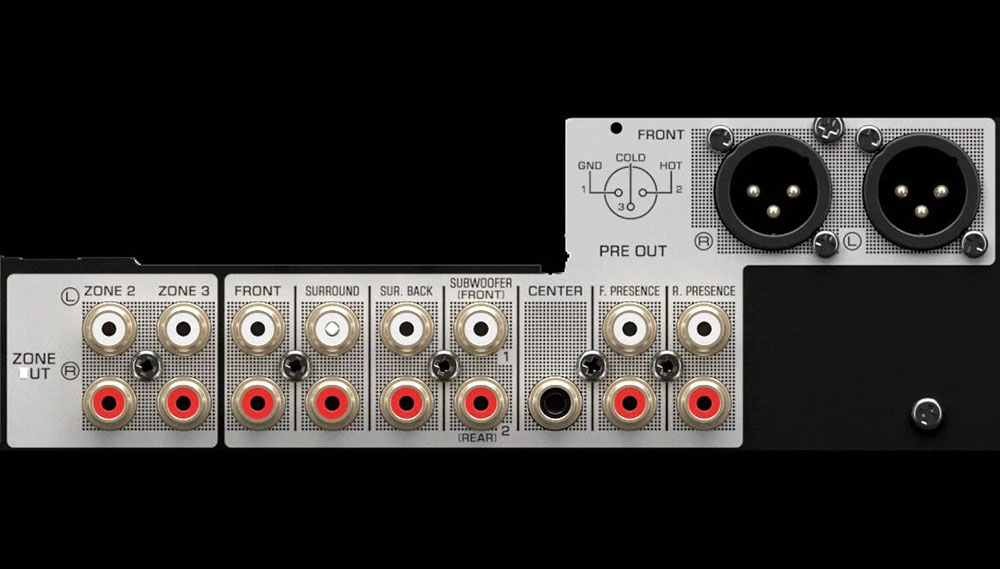
As for everything else there are 5 analog stereo inputs with another one dedicated to phono, 2 coaxial and 3 optical digital inputs, 2 composite and 1 component video input, 11.2 channels pre-outs, Zone 2 and Zone 3 analogue stereo outputs, two 12V trigger outputs, two mini jacks for remote input and output, an Ethernet port for wired connection to a local network and the usual FM/AM and WiFi/Bluetooth antenna connectors.
The receiver comes with built-in WiFi that supports both 2.4 and 5 GHz networks while it also comes with Bluetooth v4.2 which supports the usual SBC and AAC codecs. Unfortunately no AptX support which is vastly superior to the usual ones that are included.
The unit comes with everything you would expect from a high tier AV receiver. It may not include a lot of analog ports as is the case with some competing brands but let’s be honest, in 2022 HDMI is the most used port and these analog ports should slowly start to go away. Yes, some are needed for older equipment but we never understand why some flagships included so many of them. Having a full set of HDMI 2.1 ports is what sets Yamaha’s AV receivers apart from the rest right now and hopefully it will not be long before they release an update that will unlock all of their new features.
OS, Apps and Features
As for its feature set we found no differences whatsoever between this one and the flagship RX-A8A. They are the same in everything so our observations will be similar to what we wrote in that review.
In the RX-A6A once again we get the YPAO Sound Optimization with R.S.C. (Reflected Sound Control), 3D, 64-bit High Precision EQ Calculation, Low Frequency mode and Angle Measurement…yeah a long name we know! Basically it’s the same version we had seen in the previous flagships, like the RX-A3080.
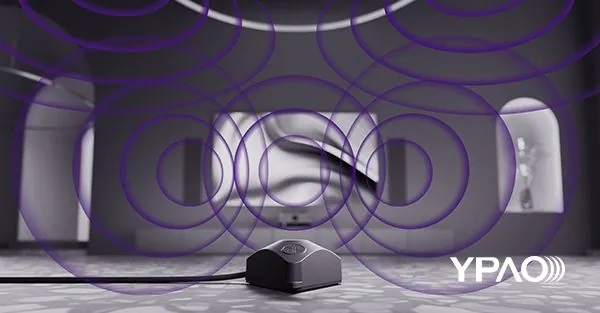
YPAO analyzes your room acoustics, measures speaker characteristics and adjusts unwanted reflected sounds to optimize every channel of your home theater. In addition the R.S.C. (Reflected Sound Control) feature is responsible of correcting early reflections and provides DSP Effect Normalization through the Cinema DSP parameters according to these reflected sounds. This results in a more balanced outcome compared to the basic system and it can improve Dolby Atmos and DTS:X performance.
YPAO 3D optimizes the sound parameters automatically in order to provide a much improved 3D soundfield with CINEMA DSP HD3, Dolby Atmos and DTS:X while multi-point and angle measurements correct audio reflections and also achieve the best sound possible by analyzing eight different listening positions. Lastly the 64-bit, high-precision EQ calculation is used in order to achieve the most natural acoustics possible compared to the less capable versions.
By following the on-screen instructions you can finish the whole process relatively easy and the YPAO will even warn you if there is some problem with your setup. In general these calibration systems offer pretty good settings and especially for those that are not used to make manual tuning it can be an excellent helper.
But before you even make this sound calibration you need to follow the initial setup in order to connect everything to the receiver. Things are pretty simple here if you have done some basic connections before and you shouldn’t have any trouble finishing this part very fast.
But even if you have any trouble Yamaha has created the Yamaha AV Receiver Setup Guide App which is a dedicated setup app that you can install to your mobile device, choose the appropriate AV receiver and follow the instructions to make the necessary wire connections. Yamaha is the only manufacturer that offers such an app, as far as we know, for guiding you through the installation process.
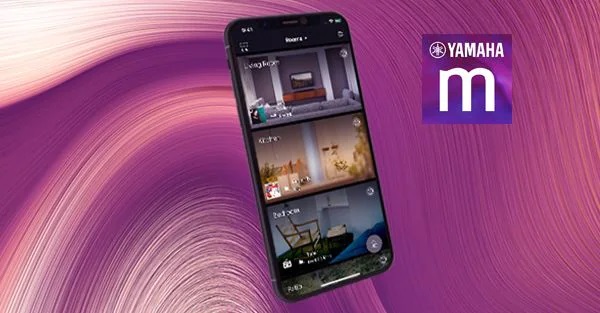
This app if free to download and is available for both iOS and Android devices and provide you with very simple visual information on how to connect everything for your specific system. A nice small app and although not many are going to use it, if you are are totally new to all this then you will certainly find this one very handy.
A common feature in most AV receivers is ECO mode that you can enable and let the receiver manage its power output in order to achieve power economy. But if you want the unit to perform at its peak power at all times then we suggest you to better leave this setting turned off. We would only recommend this if your unit becomes really hot due to being in a closed environment and you have no other way of cooling it down, then this could potentially help a little. But for that there are additional cooling solutions to consider also like the AC Infinity AIRCOM T8.
Another standard feature is voice control. Yamaha made sure to add support for both Amazon Alexa and Google Assistant but obviously if you want to use these you will need to have an external device like an Echo Dot or Google Home device. You also have the ability to use Apple’s Siri voice control through the Airplay 2 app in your mobile device.
And since we mentioned Airplay 2 we should talk about the streaming and multi-room capabilities of the receiver. As with most Yamaha receivers MusicCast is supported and with it you can connect various MusicCast enabled devices to the receiver. This can be done through the MusicCast Controller mobile app that is available for both Android and iOS devices. If on the other hand you are more of an Apple guy the included Airplay 2 app will do for you and let you connect various Airplay 2 devices to the unit. The Airplay 2 app is available in the Apple store for you to download.

The receiver also comes with some of the best multi-room capabilities we have seen in any AV receiver. It allows you to add up to three additional rooms at the same time with your main zone but obviously this will limit the available channels of your main zone to just 5.2. With such a configuration you can create a 5.2 + Zone 2 + Zone 3 while if you add an external amp you can push for a higher number of channels and go for a 7.2 + Zone 2 + Zone 3 configuration.
Obviously the less additional zones means that you can use the free channels for a better surround system in the main zone. There is plenty of flexibility there in order to choose what is best for you.
But MusicCast and Airplay 2 are not only capable at creating a multi-room environment but can be used to stream music online through various streaming services. Many of the most known names are available like Amazon Music, Spotify, Pandora, Napster, SiriusXM, Tidal, Deezer and Qobuz to name a few.
But streaming is not restricted only to it’s online services as you can also use the receiver to stream audio from a NAS server or network drive you have connected to your local network. We already mentioned above about it’s USB streaming capabilities so the last thing we need to mention is its Bluetooth support. The unit comes with Bluetooth v4.2 and it can be used to stream music to a Bluetooth enabled speaker or headphones.

Just one small note here. While using Bluetooth transmission for headphones can be good for music when it comes to movies there can be some lip sync issues as it uses the usual SBC and AAC codecs. These codecs can introduce very noticeable lag and since the receiver is not equipped with aptX low latency codecs that is ideal for that purpose the Bluetooth’s transmission usefulness is really limited mostly for music.
But except from the above features there are many more on offer and we will try to include everything here. One is HDMI to HDMI up-scaling to 4K resolution if you prefer this to be done by the receiver instead of your TV. Now if you should use this or not depends on how capable your TV is, so it is our suggestion you try both ways in order to determine which one is better. There is also HDMI-CEC with which you can use the TV’s remote to control the receiver and thus lower the number of remotes you have to use in your home theater.
Bi-amp capability could not be missing obviously from such a high profile unit and you want to drive the high and low ranges of the front channels by using independent amplifiers which can improve the acoustic result and performance of the front soundstage.
Lastly a feature that we have been seeing lately in many Yamaha AV receivers is support for wireless speakers including the MusicCast 20 and MusicCast 50 surround speakers. Also there is the MusicCast SUB 100 subwoofer that you can connect to the unit. This way you are not bound by wires and you can place the speakers wherever you want in your room.
The RX-A6A has really everything you need. It’s fully packed with both online and offline features which are enough for even the most demanding of users. No complaints here.
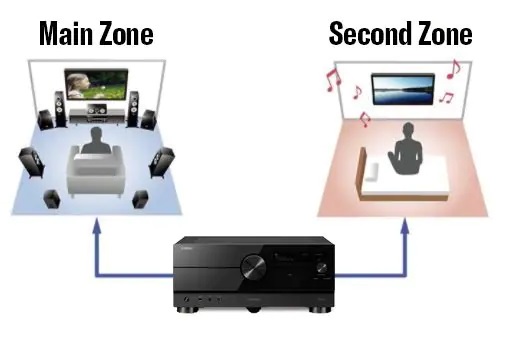
Final Thoughts
When Yamaha announced their refresh lineup we didn’t really know what to expect. Obviously a lot of attention went to the 11 channels RX-A8A flagship but in reality how many can have a 11 channels setup in their home. But surely many more would go for a 9 channels receiver with all the bells and whistles the flagship unit would have. And probably this is what Yamaha also thought as the RX-A6A is almost entirely the same as their top tier release except from the two additional channels and some minor differences in the internal hardware.
As a result going for the RX-A6A doesn’t feel like you are compromising on the features or the quality you would get if you would choose the best in their lineup. Heck, with the unit’s 11 channels processing you can reach the same number of channels if you decide to upgrade in the future so in this regard the RX-A6A is more flexible than its bigger brother. As for everything else the unit offers top quality performance. There is nothing bad to say here and the kind of features that are included are enough for most.
As for the downsides since the receiver is so much alike with its bigger brother we would say mostly the same things. Many of its HDMI 2.1 features are still locked and waiting for a future firmware upgrade that will unlock their full potential which is not exactly ideal when you are ready to pay such a premium price. Also the remote needs to become simpler and not be cluttered with buttons while Yamaha definitely needs to add a front HDMI port in the future as it is an extremely practical one.
The Yamaha RX-A6A is every bit as good as the other Aventage top AV receivers. It has the power, the quality output and extended feature set making it ideal for all kinds of rooms or setups. If the number of channels of their top offering is too much for you but you wouldn’t want to loose much else by going down their lineup ladder then the RX-A6A is the best choice you can make, save some money and still get flagship performance. As a result the unit surely gets our highest recommendation.
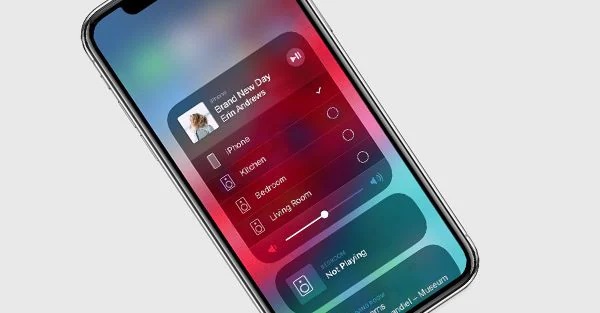
For more reviews you can check our dedicated 9 channels 8K AV Receiver reviews list or even look at our Product Reviews Table where you can find the brand and specific product you are looking for.
Cheapest Places to Buy :
*We are a reader-supported website. When you buy through links on our site, we may earn a small affiliate commission at no extra cost to you. Home Media Entertainment does not accept money for reviews.*
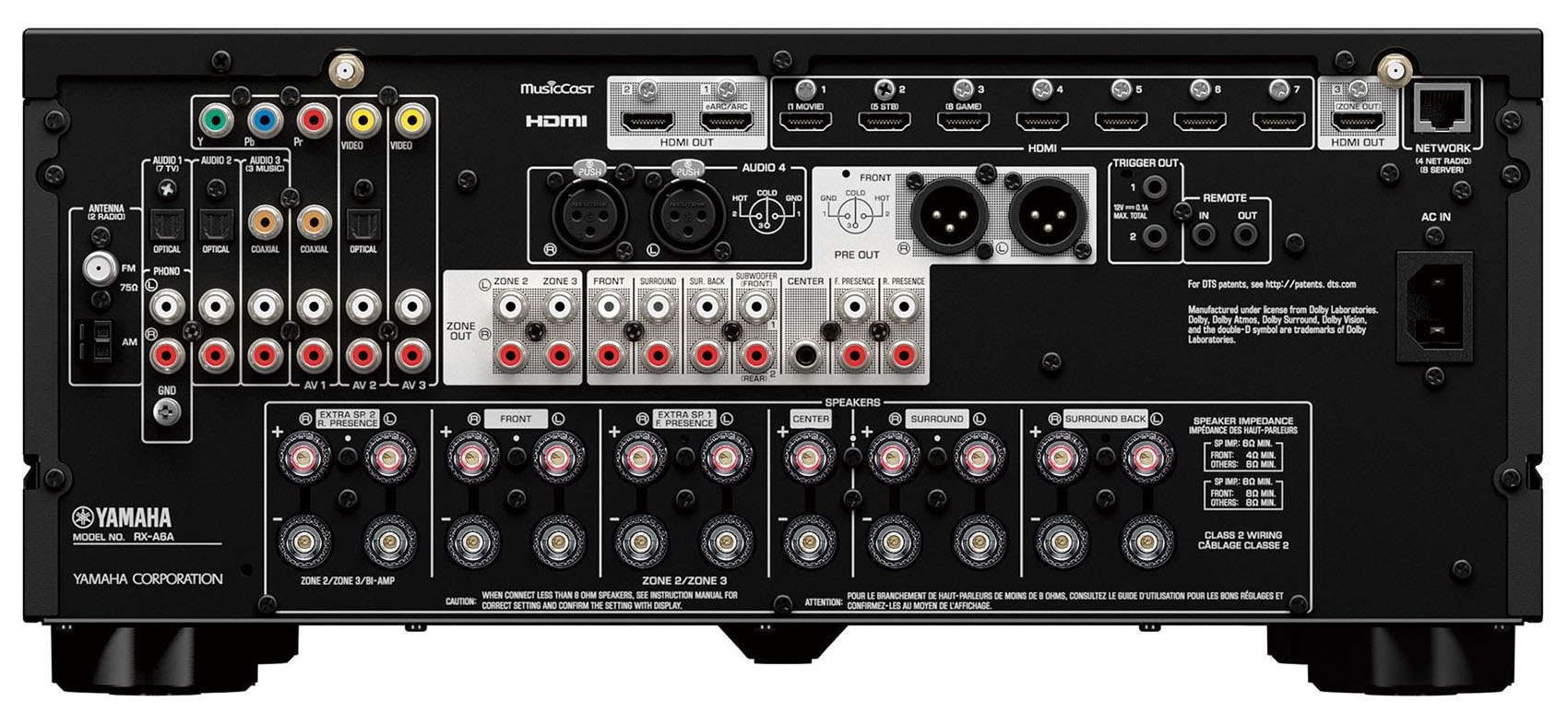
I have used many different receivers from many different companies (Sony, Pioneer, Denon etc). But nothing ever compared to the Yamaha audio receiver I purchased a few years back! The audio is so lifelike, so crisp, so detailed. Every moment was like being in a concert hall. I am looking to upgrade my Yamaha, with another Yamaha audio receiver at some point so I always check what new they bring out. The A6A looks great but I will probably wait for next year’s releases as I am ok for the moment.
Thank you for sharing your opinion. Yamaha certainly makes great AV receivers and that’s the reason why they have very dedicated fans over the years.
Although I am not currently looking at getting a new AV receiver I always look at what is coming out and your review of the RX-A6A is the most detailed and easy going I have read so far. I saw a couple of others but they were full of diagrams and measurements that don’t mean much unless you are a hardcore user that know what these mean. I like your writing as it is simpler and more easy to understand. Keep it up!
Hello Johnny. Our intention is to write our reviews as simple as possible. There are as you said other websites that provide more technical analysis but in our opinion these are aimed for very experienced users that know how to interpret these. Our aim is to provide enough information for the casual market out there that is not very experienced in so advanced charts and readings.